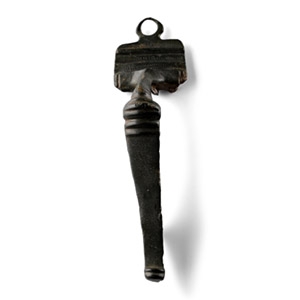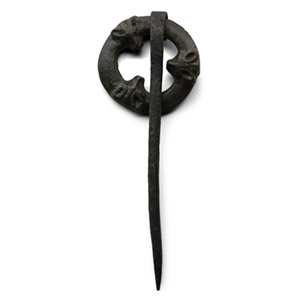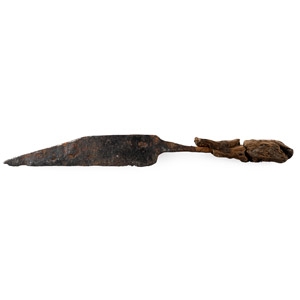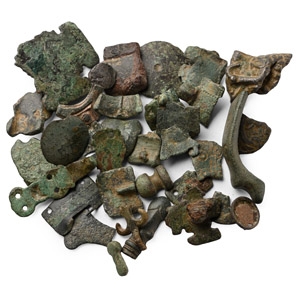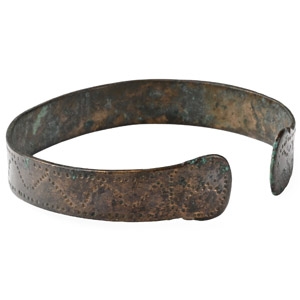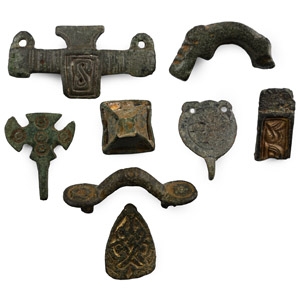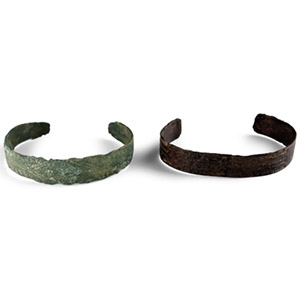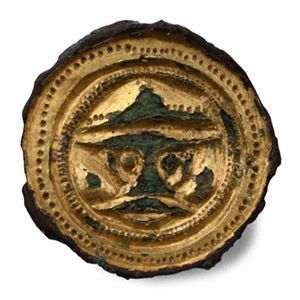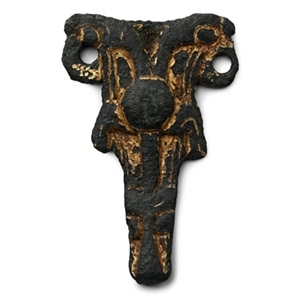Home > Auctions > 9 - 17 September 2025
Ancient Art, Antiquities, Books, Natural History & Coins
Found East Anglia, UK.
This lot is accompanied by an illustrated lot declaration signed by the Head of the Antiquities Department, Dr Raffaele D'Amato.
The design shows elements of Irish influence.
Found East Stoke, Nottinghamshire, UK.
This lot is accompanied by an illustrated lot declaration signed by the Head of the Antiquities Department, Dr Raffaele D'Amato.
From the private collection of a London gentleman, from his grandfather's collection formed before the early 1970s.
This lot is accompanied by an illustrated lot declaration signed by the Head of the Antiquities Department, Dr Raffaele D'Amato.
Acquired on the UK art market before 2000.
Property of an Essex, UK, gentleman.
This lot is accompanied by an illustrated lot declaration signed by the Head of the Antiquities Department, Dr Raffaele D'Amato.
Found East Anglia, UK.
This lot is accompanied by an illustrated lot declaration signed by the Head of the Antiquities Department, Dr Raffaele D'Amato.
UK private collection before 2000.
Acquired on the UK art market.
Private collection, London, UK.
This lot is accompanied by an illustrated lot declaration signed by the Head of the Antiquities Department, Dr Raffaele D'Amato.
Found East Anglia, UK.
This lot is accompanied by an illustrated lot declaration signed by the Head of the Antiquities Department, Dr Raffaele D'Amato.
From a private UK collection formed since the 1980s.
Ex property of a UK gallery, early 2000s.
This lot is accompanied by an illustrated lot declaration signed by the Head of the Antiquities Department, Dr Raffaele D'Amato.
Cf. MacGregor, A. et al., A Summary Catalogue of the Continental Archaeological Collections, Oxford, 1997, item 1.10.
Drum brooches (also called ‘box brooches’, Swedish Dosspännen) were a Scandinavian fashion of the Viking period, beginning in the late 8th century AD and mainly featuring Oseberg style gripping-beast motifs. They remained popular throughout the period into the 11th century AD. They are especially associated with the island of Gotland, the crossroads of trade and traffic in the Baltic where a variety of cultural influences were felt. Occasional examples occur elsewhere in the area of Scandinavian power, plausibly associated with the movement of brides from Gotland to foreign homelands. The earliest (8th century) examples are high-quality multi-part castings with lavish use of gold, parcel-gilding and silver; by the later Viking age they appear in bronze and gilt-bronze. The original artistic motifs also evolve into more geometric forms with increased use of knotwork. As a type, these brooches are characterised by their discoid upper face divided into symmetrical sectors, often with openwork detail; cords and faux-ropework to the edges are a consistent feature of the later designs; some feature a separate cast upper plate while on others it is the baseplate which is separate, occasionally the central knop is also a separate casting. It has been suggested that drum brooches were used to hold small valuables, although this seems improbable – these were normally suspended from the girdle or necklace for display. They were most probably used to fasten the triangular shawl or mantle which covered the upper body, in the dress fashion which included the heavy hängerok dress which was worn outside the undershift; the hängerok was often of rich fabric with embroidered borders, and the metal jewellery and glass beads were used to add richness to the costume. It may be this type of brooch (or the tortoise form) which was referred to by the Arab traveller Ibn Fadlan when he mentioned that Rus women wore on their chests drum-shaped brooches of iron, copper, silver or gold, whose decoration indicated the wealth of their husbands. The present example with Salin's Style III ornament is among the very earliest known, dating from the 8th century before the onset of the Viking period. It does not feature the customary separate baseplate.
UK private collection before 2000.
Acquired on the UK art market.
Private collection, London, UK.
This lot is accompanied by an illustrated lot declaration signed by the Head of the Antiquities Department, Dr Raffaele D'Amato.
Previously in a collection formed in the 1970s on the UK art market.
From the property of L.F.
Property of a Cheshire, UK, gentleman.
This lot is accompanied by an illustrated lot declaration signed by the Head of the Antiquities Department, Dr Raffaele D'Amato.
Found East Anglia, UK.
This lot is accompanied by an illustrated lot declaration signed by the Head of the Antiquities Department, Dr Raffaele D'Amato.
Cf. Avent, R. & Evison, V.I., Anglo-Saxon Button Brooches in Archaeologia, vol.CVII, 1982, p.79, for similar.
Found Weston Colville, Cambridgeshire, UK.
This lot is accompanied by an illustrated lot declaration signed by the Head of the Antiquities Department, Dr Raffaele D'Amato.
See Hines, J., Clasps-Hektespenner-Agraffen: Anglo-Scandinavian Clasps of the Third to Sixth Centuries AD. Typology, Diffusion and Function, Kungl. Vitterhets Historie och Antikvitets Akademien, 1993.
1393 - 1404 of 3897 LOTS


